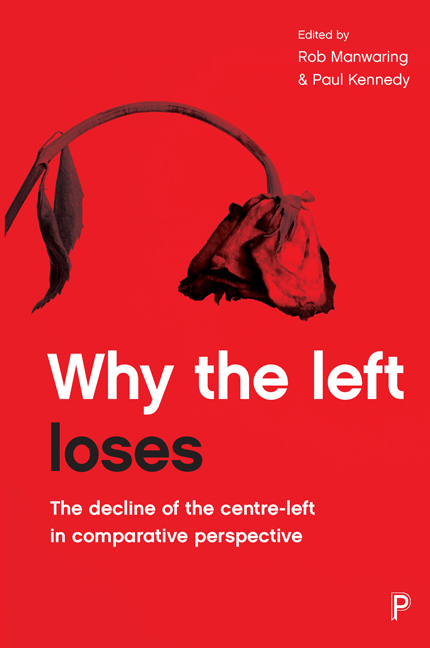Book contents
eight - The Swedish Social Democrats and the ‘new Swedish model’: playing a losing game
Published online by Cambridge University Press: 08 April 2022
Summary
Introduction
After the 2006 Swedish elections, the Social Democratic Party (SAP), the ‘natural party of government’ during the construction and heyday of the famous ‘Swedish model’ in the second half of the 20th century, entered opposition for eight long years. Initially at least, some might have taken this to represent just a regular short-term slump in electoral politics. However, for reasons discussed below, it could also be seen as the beginning of a long decline. In 2014, the former hegemons managed to return to power, but under relatively bittersweet circumstances. The elections resulted in a hung Parliament and a Red–Green coalition, incidentally also one of the weakest minority governments in Swedish history. Under Göran Persson's leadership (1996-2007), while the post-war glory years were already long gone, the SAP was able to secure 35-40 per cent of the national vote. In 2014, the fragile victory of Stefan Löfven's SAP was built on a lowly 31.0 per cent of the vote, up only marginally from the result of the 2010 election (by 0.3 per cent from 30.7 per cent).
Under these new circumstances to which SAP's own actions and policies have contributed significantly, as we will discuss later, the party is dedicating much of its energies to trying to demonstrate economic governance competence (very much defined by these constraints) rather than being visionary, redistributive and fair. The party is playing a losing game and, as we discuss, the only way in which it can reverse its fortunes is by calling the very foundations of the ‘new Swedish model’, now ironically perhaps associated with the Conservative administration of Fredrik Reinfeldt, into question. This will be a difficult task and will involve some serious soul searching, as the ‘new Swedish model’ is rooted in social democratic politics, especially the Third Way approach of the SAP governments in the late 1990s and early 2000s. The party also faces challenges at the individual/agency and ideational levels but, as we argue below, the problems they face are ultimately of a profoundly institutional nature. Nevertheless, strong, visionary leaders with social democratic ideas might be able to find at least some short-term solutions to these challenges.
- Type
- Chapter
- Information
- Why the Left LosesThe Decline of the Centre-Left in Comparative Perspective, pp. 123 - 136Publisher: Bristol University PressPrint publication year: 2017



